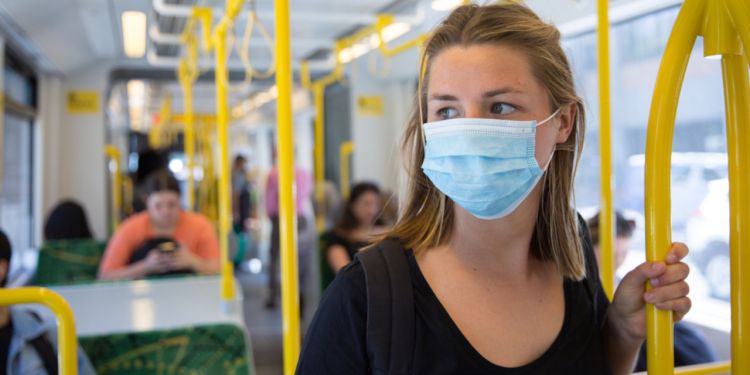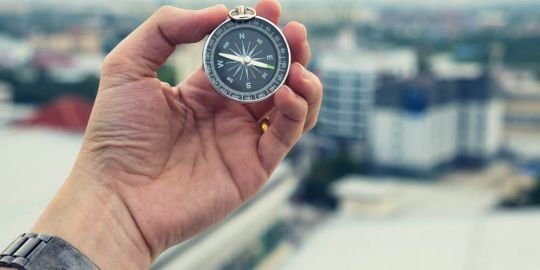Post-COVID-19 changes in Australia

Although Australia is keeping its borders closed until 2021, there are exceptions for specific categories of travellers under certain conditions. So if you want to move there after the COVID-19 crisis, here is what you should expect regarding entry conditions and visas, employment, studies, real estate, lifestyle, etc.
What are the current regulations for entering Australia?
With Australian borders remaining closed until further notice, only Australians, as well as residents and their dependents are allowed to enter the country. All travellers are quarantined for 14 days upon their arrival. Regardless of the country they come from and their mode of travel, they also have to undergo a medical check. Travellers with COVID-19 symptoms will be referred to Biosecurity officers to determine whether they will be quarantined or taken to hospital for treatment. Note that you will be quarantined in the city where you landed, even if you have planned to settle elsewhere. Transport to the quarantine centre, as well as quarantine fees, are covered by the Australian state or territory in which you are located. However, a small contribution may be requested in some cases. Also, you may have to undergo another COVID-19 test within 10 to 12 days of your quarantine. If you refuse, the quarantine period is likely to be extended. But it's worth noting that some categories of travellers, including minors travelling alone to Australia, government officials and their dependents, foreign diplomats, as well as people with medical complications, are exempt from the quarantine obligation. Find more information on the website of the Department of Health and that of the Department of Home Affairs.
Have there been any visa changes recently?
As mentioned above, permanent residents, as well as New Zealanders who are habitual residents in Australia, are allowed to enter the country provided they are in possession of supporting documents, such as a driver's licence, that they have to present on arrival. However, refugee and humanitarian visa holders are not considered residents unless they are already in Australia. Immediate family members of Australian citizens and permanent resident are permitted to enter Australia provided they have a valid visa at the time of travel and can prove their relationship, especially if is a spouse, de facto partner, dependent child or legal guardian. It can be proof of financial responsibility or shared ownership, a birth certificate or a marriage certificate. Besides, there are exceptions for foreign professionals with critical skills. They have to apply for an exception to the Australian government with supporting documents relating to the purpose of their travel to the country. Find out more on the Department of Home Affairs website.
Is it easy to find work in Australia following the crisis?
The COVID-19 crisis had a significant impact on the Australian labour market, like most countries. In June 2020, the unemployment rate reached 7.4%, and it's expected to rise to 8% in the coming months. In many sectors, employees are also facing salary cuts since the start of the crisis, not to mention temporary layoffs. According to the Australian Bureau of Statistics, there were 594,300 additional unemployed people in April 2020, and 227,700 more in May. Most sectors have been affected, with more and more companies announcing layoffs. For instance, Qantas and Virgin Airlines have already cut 6,000 and 10,000 jobs, respectively. Sales, finance, media, education, mining, and sports and arts are down on recruitment. Many multinational companies are also laying off their offshore employees. So it's definitely not the right time to move to Australia for work.
How has the Australian healthcare system performed during the crisis
In the COVID-19 era, the Australian health system is the government's top priority, as evidenced by the massive investments in this sector, coupled with a series of prevention, control and treatment initiatives. Australia is home to many top-notch hospitals with highly-skilled doctors and nurses. The capacity of hospitals across the country has been rapidly increased to accommodate COVID-19 patients. Most hospitals in the various Australian states and territories have 2.5 beds for every 1,000 people. Also, the daily screening capacity increased to 80,000 since March 2020. As in many countries, telehealth is increasingly popular in Australia. Medical consultations, making appointments, as well as medical prescriptions, are being done either by phone or via video call. Thanks to the setting up of virtual hospitals, the population is benefiting from various types of online health care. According to official figures, nearly 80% of GP consultations have been carried out remotely since March 2020.
Has anything changed regarding universities and schools?
Most schools in Australia have reopened despite new restrictions introduced in some states over the past few weeks. However, necessary precautions have been taken to ensure the safety of students at all levels. Besides temperature checks, social distancing and the wearing of masks are the new norm. Besides, education in Australia is jointly managed by the government, the different states and territories, as well as non-governmental authorities. Despite current travel restrictions, Australia chose to reopen its borders to international students for the next academic year. Measures have been taken to ensure the arrival, support and accommodation of international students. Also, student visa holders who either had to postpone their studies in Australia due to travel restrictions, or were unable to complete their training or internship due to the crisis, or were compelled to study part-time remotely, are exempt from student visa fees. They are required to complete the Form 1545 COVID-19 Impacted Student that they can request from their university. The application must be accompanied by their student visa application. However, this does not apply to new student visa applications. Besides, the Temporary Graduate (Subclass 485) visa, it will now be available for students who had to opt for distance learning during the crisis. Although international students cannot travel to Australia at this time, they can already apply for a visa. They are also granted extra time to provide their English test, biometric data and health certificate. Find out more on the Department of Education, Skills and Employment website and the Department of Home Affairs website.
How is the real estate market following the crisis?
The COVID-19 crisis had a significant impact on the Australian real estate market, like in most countries. In fact, property prices have dropped since the start of the crisis. According to a study by the CoreLogic, the loss of property values increased from 0.4% in May 2020 to 0.7% in June. According to Australian real estate professionals, things are not likely to improve soon, given the current border restrictions and market uncertainty. However, the Australian government has set up incentives for real estate investment, which turned out to be a positive thing for some cities. For example, property sales in Perth went from 280 per week since the onset of the crisis to more than 1,000 in recent weeks, which is above the average of 750 weekly sales before the crisis. The most significant drop in value (2.3%) was recorded in Melbourne and Sydney, but other cities such as Brisbane and Adelaide are relatively stable. Today, the median price of a property is around $ 475,000. If you are currently in Australia, it's probably the right time to become a homeowner.
Has the cost of living in Australia changed because of the crisis?
At the start of the COVID-19 crisis, panic buying led to a significant price rise that was 20 points above the inflation rate. According to the Australian Bureau of Statistics, prices rose by 0.3 during the first half of 2020. Across the country, the prices of non-perishable goods such as toilet paper rose by 3.4 % while hygiene products like soap and sanitisers were 2.2% more expensive. The prices of cereals such as rice and pasta, and prices of pharmaceutical products, including face masks, also went up, especially in Sydney and Melbourne. Australia being known for its high cost of living, things are not likely to improve anytime soon.
How about lifestyle? Have there been major changes in habits following the sanitary crisis?
Hand sanitising, the wearing of masks and social distancing have become an integral part of the lifestyle in Australia. Thanks to the vast awareness campaign launched by the government since the beginning of the crisis, people are paying more attention to their actions and movements. Also, many employees are still working from home. According to a survey by the Australian Institute for Family Studies, Australians have been going out less since the start of the crisis. Moreover, restaurants, bars and cafes are only accepting people in small groups. Today, Australians prefer doing sports in their living room, gardening, or watching a movie on their couch to going out. According to another study by Kantar, most Australians are avoiding public places, with 6 in 10 people having cancelled their domestic travel plans. Also, 60% of respondents admit that they are socialising less, and 40% of them are not inviting people at home.









